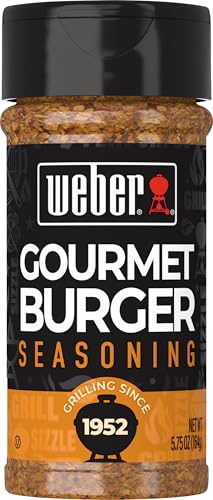Key Takeaways
- Symbol of Resilience: Burgers emerged as a symbol of resilience and hope during the Great Depression, providing comfort and filling meals despite limited resources.
- Adaptive Ingredients: Families creatively adapted burgers using inexpensive cuts of meat, fillers like breadcrumbs or beans, and whatever vegetables were available, showcasing culinary resourcefulness.
- Regional Variations: The adaptability of burgers led to diverse regional variations across the U.S., incorporating local flavors and ingredients, which further united communities through shared meals.
- Community and Connection: Burgers fostered social connections during tough times as families gathered to share meals and pass down recipes, highlighting the power of food to create bonds.
- Cultural Impact: Burgers became featured in popular media of the era, establishing their place in American culture and symbolizing unity and comfort during challenging times.
- Legacy and Modern Influence: Today, the creativity sparked by Great Depression burgers continues to thrive, inspiring modern interpretations and emphasizing the joy of simple, shared culinary experiences.
The Great Depression was a tough time for many, but it also sparked creativity in the kitchen. Among the many survival foods that emerged, burgers became an unexpected symbol of resilience. With limited resources, people learned to make the most of what they had, turning simple ingredients into satisfying meals that could feed families on a budget.
I love exploring how food reflects culture and history, and the humble burger during this era tells a fascinating story. It wasn’t just about survival; it was about bringing people together and finding joy in the little things. Join me as we dive into the world of burgers in the Great Depression and discover how this iconic dish became a beacon of hope during challenging times.
Overview of the Great Depression
The Great Depression, lasting from 1929 to the late 1930s, brought economic turmoil across the United States and worldwide. It began with the stock market crash, leading to mass unemployment, bank failures, and widespread poverty. Families faced daunting challenges, struggling to put food on the table with severely limited resources.
During this time, creativity in food preparation flourished. People turned to innovative cooking methods, repurposing ingredients to stretch their meals. Burgers, though simple, became a symbol of resilience and resourcefulness. Street vendors and home cooks alike crafted burgers using inexpensive cuts of meat, grains, and vegetables, representing a way to make filling meals without spending much.
With the introduction of ground meat, families discovered versatility. They mixed in various ingredients, like breadcrumbs or even beans, to enhance flavor while maximizing output. Burgers became adaptable to regional tastes and available resources, transforming into a staple comfort food.
As communities banded together, sharing recipes and cooking techniques, the humble burger evolved. It not only provided sustenance but also fostered camaraderie in difficult times, allowing families to gather around the table despite adversity. In the face of hardship, burgers emerged not just as meals but as a source of hope and enjoyment, embodying the spirit of survival during the Great Depression.
The Rise of Burgers as Survival Food
Burgers became a beacon of hope during the Great Depression, transforming into a symbol of sustenance and community resilience. Their adaptability and appeal allowed families to find comfort even in hard times.
Ingredients and Adaptations
Inexpensive cuts of meat formed the foundation of Great Depression burgers. Ground beef, often mixed with fillers like breadcrumbs or oats, stretched portions while enhancing texture. Cooking techniques evolved, too—grilling over a simple fire or using makeshift griddles offered flexibility. Families incorporated whatever vegetables they had on hand, from onions to potatoes, often tweaking flavors based on what was available. This spirit of innovation showed how burgers could adapt, capturing a unique blend of flavors rooted in necessity.
Regional Variations
Across the United States, regional variations of burgers sprang up, reflecting local resources and tastes. In the Midwest, for example, folks added corn and cheese to their mixture, resulting in unique flavor profiles. Southern families often included spices or BBQ sauces, creating a distinct taste that mirrored their culinary traditions. The flexibility of the burger allowed it to resonate with diverse communities, uniting people through shared meals and a love for innovative cooking despite struggles. This diversity contributed to the burger’s status as a comfort food, bringing families together regardless of circumstance.
Cultural Impact of Burgers During Hard Times
Burgers became more than just food during the Great Depression; they became a symbol of community and resilience. During tough times, families gathered around their tables to share both meals and stories, creating bonds through the simple act of cooking together. Burgers, unique in their versatility, allowed cooks to make meals with what they had on hand, leading to innovation and creativity.
Community and Social Aspects
Communities flourished even amid adversity, with burgers facilitating social connections. Families shared recipes and techniques, passing down knowledge through generations. Street vendors served accessible meals, bringing neighborhoods together. I can envision the hustle and bustle as folks lined up for a quick, delicious bite, forming friendships over sizzling patties and homemade buns.
Families hosted gatherings centered around burger-themed cookouts, where creativity thrived. This sense of togetherness created lasting memories, proving food’s power to unite us, especially during difficult times. People crafted their variations, mixing ingredients like beans, bread, or vegetables, allowing unique creations to flourish, reflecting local tastes and available resources.
Burgers in Popular Media
Burgers captured public attention, becoming featured in films, radio shows, and cookbooks during the Great Depression. Iconic establishments, often serving simple yet hearty burgers, resonated with those seeking comfort. I often think about how those early burger joints inspired so many others, planting seeds for the vibrant burger culture we see today.
Cookbooks from that era highlighted budget-friendly recipes, urging families to embrace the humble burger. The media spotlight not only showcased the burger as a quick meal solution but also celebrated its role in American culture. This recognition helped solidify burgers as symbols of hope and resilience, transcending mere nourishment to embody the spirit of unity.
The Legacy of Great Depression Burgers
Burgers during the Great Depression not only filled bellies but also forged connections among communities. These humble creations showcased resilience, adaptability, and a spirit of togetherness, becoming a culinary cornerstone in American history.
Modern Interpretations
Modern burger enthusiasts, like me, often draw inspiration from those resourceful recipes of the past. I experiment with new twists by incorporating affordable ingredients, much like families did in the ’30s. Today, I often mix ground meat with chickpeas, lentils, or beans for added nutrition and texture. Topping these burgers with roasted seasonal vegetables or homemade condiments offers a fresh perspective on a classic. Whether grilling outdoors or cooking indoors, I love designing burgers that pay homage to the creativity of the Great Depression.
The Influence on Today’s Food Culture
Today’s food culture reflects the innovative spirit of those tough times. Street food scenes thrive with gourmet burgers that embrace diverse flavors and ingredients. I often see nostalgic recipes featuring unique combinations such as kimchi, aioli, or spicy feta, all exciting takes on the traditional burger. My passion for crafting extraordinary burgers also connects with community-driven events, where people gather to celebrate food. This unity, echoing the Great Depression era, highlights how burgers aren’t just meals; they’re a way to bring everyone together around the grill, sharing stories and laughter. The essence of those Great Depression burgers lives on, continuing to inspire new creations and remind us of the satisfaction that comes from simple ingredients and shared experiences.
Conclusion
Burgers during the Great Depression remind me of the incredible resilience of people in tough times. They weren’t just meals; they were a source of comfort and community. I love how families gathered around the table to share stories and creativity through food, turning simple ingredients into something special.
As I think about those resourceful recipes, it’s amazing to see how they’ve inspired modern cooking. Today’s burgers carry that spirit forward, bringing people together and celebrating diverse flavors. The legacy of those Great Depression burgers serves as a beautiful reminder of how food can unite us, no matter the circumstances.







